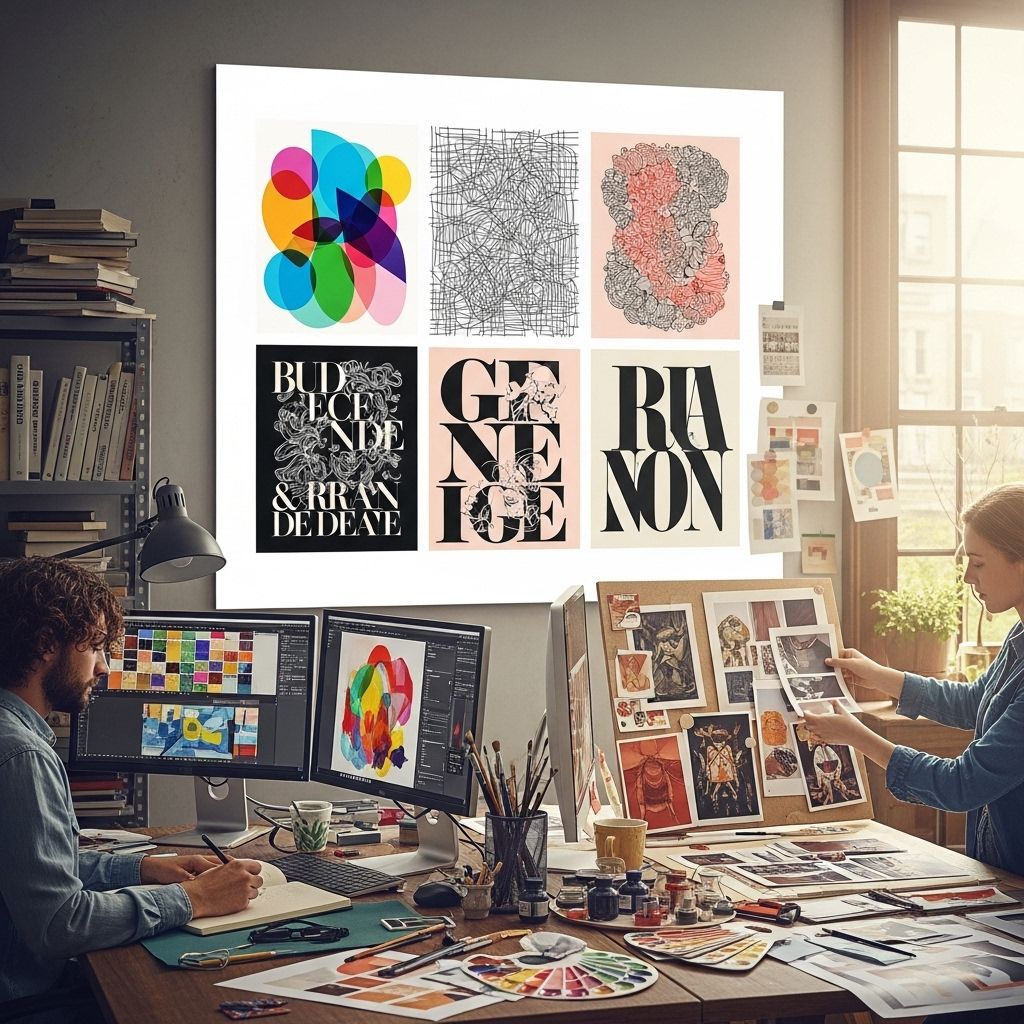Graphic design is an ever-evolving field that requires creativity, technical skills, and an understanding of visual communication. For graphic designers, finding inspiration can sometimes be a challenge. Innovative composition prompts can serve as the catalyst for new ideas, pushing designers to explore uncharted territories in their work. In this article, we will delve into various innovative composition prompts that can ignite your creativity and enhance your design process.
Understanding Composition in Graphic Design
Before diving into prompts, it’s essential to understand the fundamentals of composition in graphic design. Composition refers to the arrangement of visual elements within a design project, influencing how viewers perceive and interact with the content.
Key Components of Composition
- Balance: Achieving harmony in visual weight.
- Contrast: Creating distinctions among elements to draw attention.
- Hierarchy: Organizing elements to guide the viewer’s eye effectively.
- Alignment: Ensuring elements are visually connected.
- White Space: Using empty space to enhance readability and focus.
Each of these components plays a crucial role in creating effective and aesthetically pleasing designs.
Innovative Composition Prompts
Here are some innovative prompts that can help graphic designers think outside the box:
1. Deconstructing Famous Artworks
Choose a well-known artwork and deconstruct it into its basic elements. Analyze the use of color, shape, and texture, then create a design that pays homage to the original while using contemporary design techniques. Consider using:
- Different color palettes
- Modern typography
- New media (e.g., digital illustrations, 3D modeling)
2. Create a Visual Metaphor
Select an abstract concept or emotion and represent it visually using symbols. This exercise encourages you to think metaphorically and explore how visuals can convey deeper meanings. For example:
- Representing ‘freedom’ through open spaces and flight elements.
- Illustrating ‘anxiety’ using chaotic patterns and dark colors.
3. The Five Senses
Design an artwork that represents each of the five senses in a cohesive way. This can be done by creating a series of five illustrations or a single piece that integrates all senses. Consider how:
- Sight: Use vibrant colors and striking images.
- Sound: Incorporate waveforms or music notes.
- Taste: Create designs that evoke flavors, using food imagery.
- Touch: Explore textures visually.
- Smell: Use imagery associated with nature or fragrances.
4. Typography Experimentation
Typography is a powerful tool in graphic design. Challenge yourself by creating a piece where typography is the primary element. Try these approaches:
- Using only type to convey an emotion or message.
- Creating 3D typography that interacts with the surrounding environment.
- Incorporating hand-lettering to give a personal touch.
5. Color Palette Challenge
Select an unusual color palette and create a design that feels cohesive. This can involve:
- Choosing a limited palette of unexpected colors.
- Exploring monochromatic schemes with variations in hue and saturation.
- Creating gradients that transition between unconventional colors.
Collaborative Prompts
Collaboration can lead to innovative ideas and unique solutions. Here are prompts designed for collaborative efforts:
1. Design Chaining
Partner with another designer and create a piece of work where each of you alternates adding elements. This will push you to adapt your style to integrate with another’s vision.
2. Thematic Mood Boards
Work together to create mood boards based on a shared theme. This can include:
- Image inspiration
- Color schemes
- Texture samples
Afterward, use these mood boards to inform your individual designs.
Using Technology for Inspiration
In today’s digital age, technology can provide tools and platforms that spark creativity. Here are some ways to utilize technology:
1. Design Software Exploration
Experiment with design software that you’re not familiar with. Trying out new tools can lead to unexpected results and innovative compositions. Some software to explore includes:
- Adobe XD
- Sketch
- Figma
2. Online Design Challenges
Participate in online design challenges that encourage you to create under specific constraints. Websites like Dribbble and Behance often host themed contests that can provide new perspectives on design.
3. Virtual Reality (VR) and Augmented Reality (AR)
Explore VR and AR applications that allow you to create immersive experiences. This can offer a fresh approach to composition by adding depth and interaction to your designs.
Final Thoughts
Innovative composition prompts can significantly enhance a graphic designer’s creative process. By stepping outside their comfort zone and embracing new techniques, designers can produce distinctive and compelling work. Engage with these prompts, collaborate with fellow designers, and leverage technology to push the boundaries of your creativity. With each project, remember that the journey of design is as important as the end result. Happy designing!
FAQ
What are some unique composition prompts for graphic designers?
Graphic designers can explore prompts such as creating a design inspired by a specific emotion, reimagining a classic artwork with a modern twist, or designing an album cover for a fictional band.
How can I improve my composition skills as a graphic designer?
To improve composition skills, try studying the principles of design, practicing with different layouts, and seeking feedback on your work from peers or mentors.
What role does color play in graphic design composition?
Color greatly influences the mood and effectiveness of a composition; using a harmonious color palette can enhance the overall visual appeal and message of the design.
Can you suggest a composition prompt using typography?
A great typography-based prompt could be to create a poster where the text tells a story, using varying font sizes and styles to convey different emotions and themes.
How can I find inspiration for my graphic design compositions?
Inspiration can be found in everyday life, nature, art galleries, design blogs, and social media platforms like Pinterest and Instagram; exploring different cultures and styles can also spark creativity.




